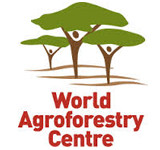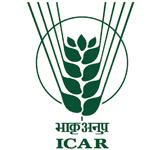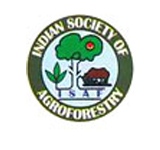
Vigyan Bhavan & Kempinski Ambience
10 - 14 February 2014
Delhi, India
blog

The deliberate growth of woody perennials on the same unit of land along with agricultural crops and animals either in some form of spatial mixture and in some temporal sequence with a significant ecological interaction is called agroforestry.
There is a considerable amount of resource sharing by the components in this system. This result in complementary or competitive effects depending upon the nature of the species involved in the system. The quality and quantity of light available to the understorey crops is of extreme importance for the sustenance of the system because opportunities for substantial temporal complementarities exist for storable resources like water and nutrients in a system if major resources demand is at different times.
On the other hand for un-storable resources like light spatial complementarities is the only phenomenon available. Annual food grain crops have been domesticated by man for traits favourable for high production in addition to resistance to abiotic and biotic stresses. Physiological basis of Low light stress and selection of food grain crops that are tolerant to low light stress has been largely neglected by researchers because low light stress is not actually an abiotic stress which human kind was interested in since the problem of light stress is evident only in the high latitudes in winter wherein sunlight is premium. The only use of low light tolerant food grain crops in the tropics is related to Agroforestry.
On the other hand tropical regions like ours have no reason to naturally select low light tolerant crops. Consequently there is a possibility that the genetic makeup conferring low light tolerance and ensuing physiological response would have been lost in the processes of evolution.
This highlights and necessitates the need for an elucidative approach to the physiological basis of low light stress in terms of gene expression, metabolic alternations and photochemistry as either an effect of stress or as a mechanism to counter stress, which will help in selecting suitable crops for optimal yields in Agroforestry systems.
Physiological function analysis of environment – plant interaction has currently entered the high through put era with the advent of DNA micro array method. However, despite widespread acceptance, the use of micro arrays as a tool to better understand processes of interest to the plant physiologist is still in its infancy. This project will make use of this approach in addition to conventional methods to achieve the objectives.
Low light stress in crops will induce physiological, metabolic and photochemical alternations as a response to stress or as a mechanism to counter stress. 2. Changes in expression of several genes will be the primary cause for these responses
The overall objective will be to, to elucidate the physiological, biochemical and molecular basis of low light stress response in selected (barley, wheat, rice and soybean) crops and the specific objectives will be, to study the chlorophyll (Chl) fluorescence kinetics and chlorophyll metabolism as influenced by low light, to study the genome wide expression patterns as influenced by low light stress by DNA micro array method and to determine the path of signal transmission that activate adaptive responses from gene to physiological function as an effect of low light stress.
In essence the project will have a molecule to ecosystem approach and will consist of three separate experiments:
1.Completely controlled (different light intensity in terms of photosynthetic photon flux density) growth chamber hydroponic experiment for metabolic and molecular analysis,
2. Simulated net house (three shade percentages) studies of complete life cycle of crops for physiological analysis,
3. Natural field ecosystem studies (existing Agroforestry systems at the Centre) for ecophysiology, biometrics, growth and yield.
This project will make use of DNA Microarray approach (comprehensive, simultaneous gene expression profiling refer fig above) to achieve the objectives in Exp 1. Prefabricated whole genome micro array for the crops will be obtained from Affymetrix as Gene Chip ®.
Data obtained will be subjected to several standard statistical techniques to help interpret micro array data, including hierarchical clustering, principal component analysis (PCA) and self-organizing maps (SOM). In addition enzymes and metabolites of chlorophyll biosynthesis, antioxidative metabolism and pigment compositions will be estimated.
In exp.2 (full life cycle three stages) Chlorophyll content and florescence Chl a, Chl b, Total Chl and ratios thereof and F0, Fv, Fv/Fm, Quantum yield and electron transport rate and photosynthetic rate will be estimated by using chlorophyll fluorescence meter. In addition growth and yield on per plant basis will be analyzed. In exp3 (natural ecosystem) wherein natural shade (no treatment will be imposed) effect on crop growth, gas exchange, biometrics, yield and yield components will be estimated in addition to basic florescence data. Relevant statistical procedures will be followed for each experiment for data analysis.
The expected outcome of this approach will be – Genome-wide expression patterns of the selected crops as affected by low light stress, basic insight into the functional physiological basis of the molecular mechanisms co-ordinating metabolic pathways, regulatory and signalling networks under low light stress. Pinpointed pathway loci for conventional genetics and molecular plant breeders to manipulate and develop tolerant varieties/transgenic plants with enhanced tolerance to lowlight stress.
Discovery of novel genes associated with light stress, knowledge on the method of adaptation and mechanism of toleration of plants to low light intensity from photon capture to CO2 fixation and dry matter accumulation. Shade tolerant crop (among the crops studied) most suitable for maximum yield under Agroforestry systems, light incidence–crop response relationship which can serve as a suitability index for selection of crops for Agroforestry systems.
Blogpost and illustration by Dr. Arun K.Shanker, Principal Scientist (Plant Physiology)
Central Research Institute for Dryland Agriculture (CRIDA), Indian Council of Agricultural Research (ICAR),
(Santoshnagar, Saidabad P.O, Hyderabad) – arunshank(at)gmail.com
|
This post is entry nr #26 in our #WCA2014 blog competition. The five blogposts with the most and highest votes will receive a signed copy of the book "Trees for Life". The most popular blogpost will get an iPad.
This blogpost received 45 votes, with an average score of 5 (out of a max of 5).
Follow our #WCA2014 social reporting teamfollow our social reporting team via the #WCA2014 tag on Twitter, our blog and our Facebook page.
|






12 People have left comments on this post
Good to see it, coming from ICAR system, voted!
Dr Mahesh Chander, Principal Scientist & Head, Div of Extn Education, IVRI, Izatnagar
The author seems to be of the view that low light stress is less important relatively in crop plants. In fact, several of the crop plants experience the low light stress ( not just shade loving) as the lower canopy is always subjected to low light intensities and photosynthesis in fact has been regulated by light came from these studies. Nevertheless reports on agroforestry systems is less systematic and scarce. Is it possible to select based on the microarrays and other physiological tools in the forestry systems would lead to better TDM accumulation ? In tree crops, the longevity of the leaf and chloroplast features of photosyntheis are the determining factors and therefore could be related to the ageing of organism thereby the ecosystem. In one such interesting estimate the total chlorophyll contents of Brassica and Rice per unit area and the production potential did not vary based on the values published in literature. It is amazing and worth to make an attempt to prove or disprove a hypothesis.
Thanks for the comments Dr. Mahesh Chander and Dr. S.R. Voleti
Interesting to read
Voted
Excellent concept, I dont know much about the issue but I support your idea. Best wishes.
Dr. Prabhat kumar Pankaj, CRIDA, Hyderabad
Excellent research communication
and nice interpretation.
Sir, this type of study is doing in NRCAF by Dr. Alam from last 7 years…………………….and 4 urs kind information he has already studied 12-13 crops till now.
—-
Editor: As the email address from the commenter does not seem to work, we publish the answer from the blogpost author:
—
Dear Abhishek
I fear you are not correctly informed.
Please contact Dr. Alam and find out who initiated the project which you claim Dr. Alam is doing…
Have you read my blog correctly?
Please ask Dr. Alam if he has done transcriptomics in 10-12 crops as you have claimed and also please find out who was working in NRCAF before Dr. Alam joined the institute.
You say that “he has already studied 12-13 crops till now”. Can you please let me know where the study has been documented ?
Thanks
Sincerely
Dr. Arun K.Shanker,
Senior Scientist (Plant Physiology)
Central Research Institute for Dryland Agriculture (CRIDA)
Indian Council of Agricultural Research (ICAR),
Santoshnagar, Saidabad P.O, Hyderabad – 500 059
WEB Home: http://www.agriculture.frih.net/
Publication List : http://publicationslist.org/arunshank
Academia : http://crida.academia.edu/ArunShanker
excellent interpretation
Excellent work
Nice work